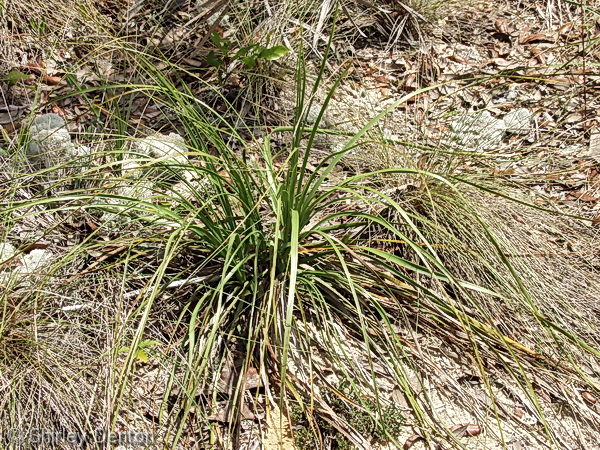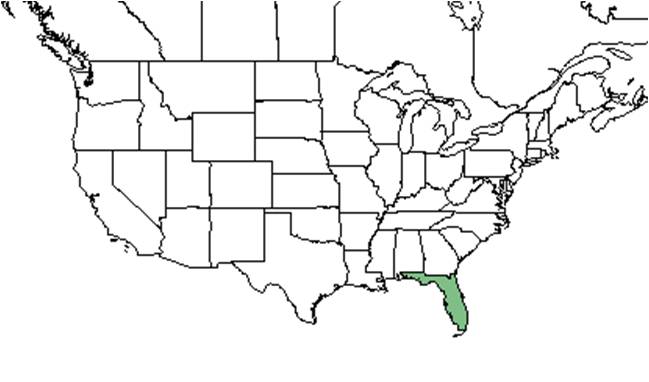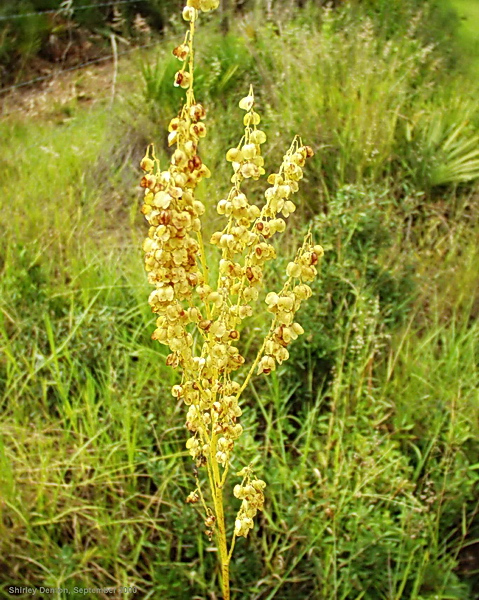Difference between revisions of "Nolina brittoniana"
HaleighJoM (talk | contribs) (→Ecology) |
|||
| (37 intermediate revisions by 8 users not shown) | |||
| Line 3: | Line 3: | ||
{{taxobox | {{taxobox | ||
| name = Nolina brittoniana | | name = Nolina brittoniana | ||
| − | | image = | + | | image = Noli_brit.jpg |
| − | | image_caption = | + | | image_caption = Photo taken by Shirley Denton (Copyrighted, Use by photographer’s permission only) [http://www.shirleydenton.com/welcome Nature Photography by Shirley Denton] |
| regnum = Plantae | | regnum = Plantae | ||
| divisio = Magnoliophyta - Flowering plants | | divisio = Magnoliophyta - Flowering plants | ||
| classis = Liliopsida – Monocotyledons | | classis = Liliopsida – Monocotyledons | ||
| ordo = Liliales | | ordo = Liliales | ||
| − | | familia = | + | | familia = Ruscaceae |
| genus = ''Nolina '' | | genus = ''Nolina '' | ||
| species = '''''N. brittoniana''''' | | species = '''''N. brittoniana''''' | ||
| Line 15: | Line 15: | ||
| binomial_authority = Nash | | binomial_authority = Nash | ||
| range_map = noli_brit_dist.jpg | | range_map = noli_brit_dist.jpg | ||
| − | | range_map_caption = Natural range of ''Nolina brittoniana'' from USDA NRCS [http:// | + | | range_map_caption = Natural range of ''Nolina brittoniana'' from USDA NRCS [http://plants.usda.gov/core/profile?symbol=NOBR Plants Database]. |
}} | }} | ||
| + | |||
| + | Common name: Britton's beargrass<ref name="weakley">Weakley, A.S. 2015. Flora of the southern and mid-atlantic states. Working Draft of 21 May 2015. University of North Carolina at Chapel Hill, Chapel Hill, North Carolina.</ref> | ||
| + | ==Taxonomic notes== | ||
| + | Synonyms: none.<ref name="weakley">Weakley, A.S. 2015. Flora of the southern and mid-atlantic states. Working Draft of 21 May 2015. University of North Carolina at Chapel Hill, Chapel Hill, North Carolina.</ref> | ||
| + | |||
| + | Varieties: none.<ref name="weakley">Weakley, A.S. 2015. Flora of the southern and mid-atlantic states. Working Draft of 21 May 2015. University of North Carolina at Chapel Hill, Chapel Hill, North Carolina.</ref> | ||
==Description== | ==Description== | ||
<!-- Basic life history facts such as annual/perrenial, monoecious/dioecious, root morphology, seed type, etc. --> | <!-- Basic life history facts such as annual/perrenial, monoecious/dioecious, root morphology, seed type, etc. --> | ||
| − | + | A description of ''Nolina brittoniana'' is provided in [http://efloras.org/florataxon.aspx?flora_id=1&taxon_id=242101797 The Flora of North America]. | |
| + | |||
| + | It is a perennial that grows from a short, thick, bulb-like rootstock.<ref name="fws">[[http://www.fws.gov/northflorida/Species-Accounts/Brittons-Beargrass-2005.htm]] FWS Accessed: February 10, 2016</ref> Its green leaves are 3-9 mm wide, while its capsules 8-10 mm in diameter.<ref name="weakley">Weakley, A.S. 2015. Flora of the southern and mid-atlantic states. Working Draft of 21 May 2015. University of North Carolina at Chapel Hill, Chapel Hill, North Carolina.</ref> | ||
| + | |||
| + | It is very similar to ''Nolina atopocarpa''; however, ''N. atopocarpa'' has shorter leaves, green flowers, and asymmetrical fruits.<ref name="center">[[http://www.centerforplantconservation.org/collection/CPC_ViewProfile.asp?CPCNum=2960]] Center for Plant Conservation. Accessed: February 10, 2016</ref> | ||
| + | |||
==Distribution== | ==Distribution== | ||
| + | This species is a narrow endemic, nearly entirely limited to the Lake Wales Ridge.<ref> name="Dolan et al. 2004">Dolan, R. W., R. Yahr, et al. (2004). "Population Genetic Structure in Nolina brittoniana (Agavaceae), a Plant Endemic to the Central Ridges of Florida." Southeastern Naturalist 3(1): 25-36.</ref> Most species endemic to the Lake Wales Ridge are selective in habitat; however, ''N. brittoniana'' is a edaphic generalist and has a broad microhabitat tolerance (Menges 1998). It ranges from North Florida (Marion County) to southcentral Florida.<ref name="weakley">Weakley, A.S. 2015. Flora of the southern and mid-atlantic states. Working Draft of 21 May 2015. University of North Carolina at Chapel Hill, Chapel Hill, North Carolina.</ref> | ||
| + | |||
==Ecology== | ==Ecology== | ||
===Habitat=== <!--Natural communities, human disturbed habitats, topography, hydrology, soils, light, fire regime requirements for removal of competition, etc.--> | ===Habitat=== <!--Natural communities, human disturbed habitats, topography, hydrology, soils, light, fire regime requirements for removal of competition, etc.--> | ||
| + | In the Lake Wales Ridge, ''N. brittoniana'' occurs in scrub oak sand ridges and ''Pinus clausa''-''Ceratiola'' scrubs. Associated species include sand pine, scrub oak, and palmetto.<ref name="FSU Herbarium">Florida State University Robert K. Godfrey Herbarium database. URL: [http://herbarium.bio.fsu.edu http://herbarium.bio.fsu.edu]. Last accessed: October 2015. Collectors: Edwin L. Bridges, D. Burch, R.J. Eaton, H.A. Gleason, Robert K. Godfrey, Steve L. Orzell, James D. Ray, D.B. Ward. States and Counties: Florida: Highlands, Orange, Polk. Compiled by Tall Timbers Research Station and Land Conservancy.</ref> | ||
| + | |||
===Phenology=== <!--Timing off flowering, fruiting, seed dispersal, and environmental triggers. Cite PanFlora website if appropriate: http://www.gilnelson.com/PanFlora/ --> | ===Phenology=== <!--Timing off flowering, fruiting, seed dispersal, and environmental triggers. Cite PanFlora website if appropriate: http://www.gilnelson.com/PanFlora/ --> | ||
| − | ===Seed dispersal=== | + | This species fruits May through August.<ref name="FSU Herbarium"/> |
| − | ===Seed bank and germination=== | + | |
| + | It has been observed that ''N. brittoniana'' has low levels of genetic variation despite having traits that are correlated with high genetic variation (Hamrick et al. 1991). However, compared to other Lake Wales Ridge endemics, ''N. brittoniana'' has one of the highest levels of genetic diversity.<ref name="Menges and Dolan 2001">Menges, E. S., R. W. Dolan, et al. (2001). "Comparative Genetics of Seven Plants Endemic to Florida's Lake Wales Ridge." Castanea 66(1/2): 98-114.</ref> | ||
| + | |||
| + | <!--===Seed dispersal===--> | ||
| + | <!--===Seed bank and germination===--> | ||
===Fire ecology=== <!--Fire tolerance, fire dependence, adaptive fire responses--> | ===Fire ecology=== <!--Fire tolerance, fire dependence, adaptive fire responses--> | ||
| + | Weekley and Menges (2003) found that 98% of individuals survived after a low intensity fire, suggesting this species is a strong resprouter following a fire. If the fire is high intensity, it could cause high mortality rates and low post-burn growth. Flowering is the greatest the first year post-fire, with the flowering rate dropping dramatically over subsequent years.<ref name="Menges et al. 1996">Menges, E.S., D.R. Gordon, and R.W. Dolan. 1996. Demography, breeding system, and genetics of Nolina brittoniana. Report to Florida Statewide Endangered and Threatened Plant Conservation Program. Florida Department of Agriculture and Consumer Services, Division of Forestry; Tallahassee, Florida. </ref> | ||
| + | |||
===Pollination=== | ===Pollination=== | ||
| − | + | Pollination is necessary for successful seed production.<ref name="TNC 1995">TNC. (1995). "Element stewardship abstract for Nolina brittoniana-Britton's bear grass." Arlington, Virginia: The Nature Conservancy.</ref> | |
| − | + | The following Hymenoptera species were observed visiting flowers of ''Nolina brittoniana'' at the Archbold Biological Station:<ref name="Deyrup 2015">Deyrup, M.A. and N.D. 2015. Database of observations of Hymenoptera visitations to flowers of plants on Archbold Biological Station, Florida, USA.</ref> | |
| − | + | Bees from the family Apidae: ''Apis mellifera'' | |
| − | Leucospididae: Leucospis slossonae | + | Wasps from the family Leucospididae: ''Leucospis robertsoni, L. slossonae'' |
| − | Sphecidae: Ammophila pictipennis | + | Thread-waisted wasps from the family Sphecidae: ''Ammophila pictipennis, Bicyrtes quadrifasciata, Cerceris fumipennis, C. rufopicta, Sphex ichneumoneus'' |
| − | + | Wasps from the family Vespidae: ''Pachodynerus erynnis'' | |
| + | <!--===Herbivory and toxicology===--> | ||
| + | <!--===Diseases and parasites===--> | ||
| − | + | ==Conservation, cultivation, and restoration== | |
| + | Endangered: April 27, 1993.<ref name="fws"/> | ||
| − | + | The distribution is limited to the Lake Wales Ridge, which is being quickly converted to agricultural and residential development. Fragmentation and fire suppression are also responsible for the decline in populations of endemic species along the Lake Wales Ridge.<ref name="fws"/> | |
| + | ==Cultural use== | ||
| − | + | ==Photo Gallery== | |
| + | <gallery widths=180px> | ||
| + | File: Noli_brit-Flowers_fr2.jpg | <center> Flowers of ''Nolina'' ''brittoniana'' <p> Photo by Shirley Denton (Copyrighted, Use by photographer’s permission only) [http://www.shirleydenton.com/welcome Nature Photography by Shirley Denton] </p> | ||
| + | </gallery> | ||
| − | + | ==References and notes== | |
| − | + | Weekley, C. W. and E. S. Menges (2003). "Species and Vegetation Responses to Prescribed Fire in a Long-Unburned, Endemic-Rich Lake Wales Ridge Scrub." The Journal of the Torrey Botanical Society 130(4): 265-282. | |
| − | |||
| − | |||
| − | |||
| − | |||
| − | |||
Latest revision as of 15:50, 14 July 2022
| Nolina brittoniana | |
|---|---|

| |
| Photo taken by Shirley Denton (Copyrighted, Use by photographer’s permission only) Nature Photography by Shirley Denton | |
| Scientific classification | |
| Kingdom: | Plantae |
| Division: | Magnoliophyta - Flowering plants |
| Class: | Liliopsida – Monocotyledons |
| Order: | Liliales |
| Family: | Ruscaceae |
| Genus: | Nolina |
| Species: | N. brittoniana |
| Binomial name | |
| Nolina brittoniana Nash | |

| |
| Natural range of Nolina brittoniana from USDA NRCS Plants Database. | |
Common name: Britton's beargrass[1]
Contents
Taxonomic notes
Synonyms: none.[1]
Varieties: none.[1]
Description
A description of Nolina brittoniana is provided in The Flora of North America.
It is a perennial that grows from a short, thick, bulb-like rootstock.[2] Its green leaves are 3-9 mm wide, while its capsules 8-10 mm in diameter.[1]
It is very similar to Nolina atopocarpa; however, N. atopocarpa has shorter leaves, green flowers, and asymmetrical fruits.[3]
Distribution
This species is a narrow endemic, nearly entirely limited to the Lake Wales Ridge.[4] Most species endemic to the Lake Wales Ridge are selective in habitat; however, N. brittoniana is a edaphic generalist and has a broad microhabitat tolerance (Menges 1998). It ranges from North Florida (Marion County) to southcentral Florida.[1]
Ecology
Habitat
In the Lake Wales Ridge, N. brittoniana occurs in scrub oak sand ridges and Pinus clausa-Ceratiola scrubs. Associated species include sand pine, scrub oak, and palmetto.[5]
Phenology
This species fruits May through August.[5]
It has been observed that N. brittoniana has low levels of genetic variation despite having traits that are correlated with high genetic variation (Hamrick et al. 1991). However, compared to other Lake Wales Ridge endemics, N. brittoniana has one of the highest levels of genetic diversity.[6]
Fire ecology
Weekley and Menges (2003) found that 98% of individuals survived after a low intensity fire, suggesting this species is a strong resprouter following a fire. If the fire is high intensity, it could cause high mortality rates and low post-burn growth. Flowering is the greatest the first year post-fire, with the flowering rate dropping dramatically over subsequent years.[7]
Pollination
Pollination is necessary for successful seed production.[8]
The following Hymenoptera species were observed visiting flowers of Nolina brittoniana at the Archbold Biological Station:[9]
Bees from the family Apidae: Apis mellifera
Wasps from the family Leucospididae: Leucospis robertsoni, L. slossonae
Thread-waisted wasps from the family Sphecidae: Ammophila pictipennis, Bicyrtes quadrifasciata, Cerceris fumipennis, C. rufopicta, Sphex ichneumoneus
Wasps from the family Vespidae: Pachodynerus erynnis
Conservation, cultivation, and restoration
Endangered: April 27, 1993.[2]
The distribution is limited to the Lake Wales Ridge, which is being quickly converted to agricultural and residential development. Fragmentation and fire suppression are also responsible for the decline in populations of endemic species along the Lake Wales Ridge.[2]
Cultural use
Photo Gallery
Flowers of Nolina brittoniana Photo by Shirley Denton (Copyrighted, Use by photographer’s permission only) Nature Photography by Shirley Denton
References and notes
Weekley, C. W. and E. S. Menges (2003). "Species and Vegetation Responses to Prescribed Fire in a Long-Unburned, Endemic-Rich Lake Wales Ridge Scrub." The Journal of the Torrey Botanical Society 130(4): 265-282.
- ↑ 1.0 1.1 1.2 1.3 1.4 Weakley, A.S. 2015. Flora of the southern and mid-atlantic states. Working Draft of 21 May 2015. University of North Carolina at Chapel Hill, Chapel Hill, North Carolina.
- ↑ 2.0 2.1 2.2 [[1]] FWS Accessed: February 10, 2016
- ↑ [[2]] Center for Plant Conservation. Accessed: February 10, 2016
- ↑ name="Dolan et al. 2004">Dolan, R. W., R. Yahr, et al. (2004). "Population Genetic Structure in Nolina brittoniana (Agavaceae), a Plant Endemic to the Central Ridges of Florida." Southeastern Naturalist 3(1): 25-36.
- ↑ 5.0 5.1 Florida State University Robert K. Godfrey Herbarium database. URL: http://herbarium.bio.fsu.edu. Last accessed: October 2015. Collectors: Edwin L. Bridges, D. Burch, R.J. Eaton, H.A. Gleason, Robert K. Godfrey, Steve L. Orzell, James D. Ray, D.B. Ward. States and Counties: Florida: Highlands, Orange, Polk. Compiled by Tall Timbers Research Station and Land Conservancy.
- ↑ Menges, E. S., R. W. Dolan, et al. (2001). "Comparative Genetics of Seven Plants Endemic to Florida's Lake Wales Ridge." Castanea 66(1/2): 98-114.
- ↑ Menges, E.S., D.R. Gordon, and R.W. Dolan. 1996. Demography, breeding system, and genetics of Nolina brittoniana. Report to Florida Statewide Endangered and Threatened Plant Conservation Program. Florida Department of Agriculture and Consumer Services, Division of Forestry; Tallahassee, Florida.
- ↑ TNC. (1995). "Element stewardship abstract for Nolina brittoniana-Britton's bear grass." Arlington, Virginia: The Nature Conservancy.
- ↑ Deyrup, M.A. and N.D. 2015. Database of observations of Hymenoptera visitations to flowers of plants on Archbold Biological Station, Florida, USA.
